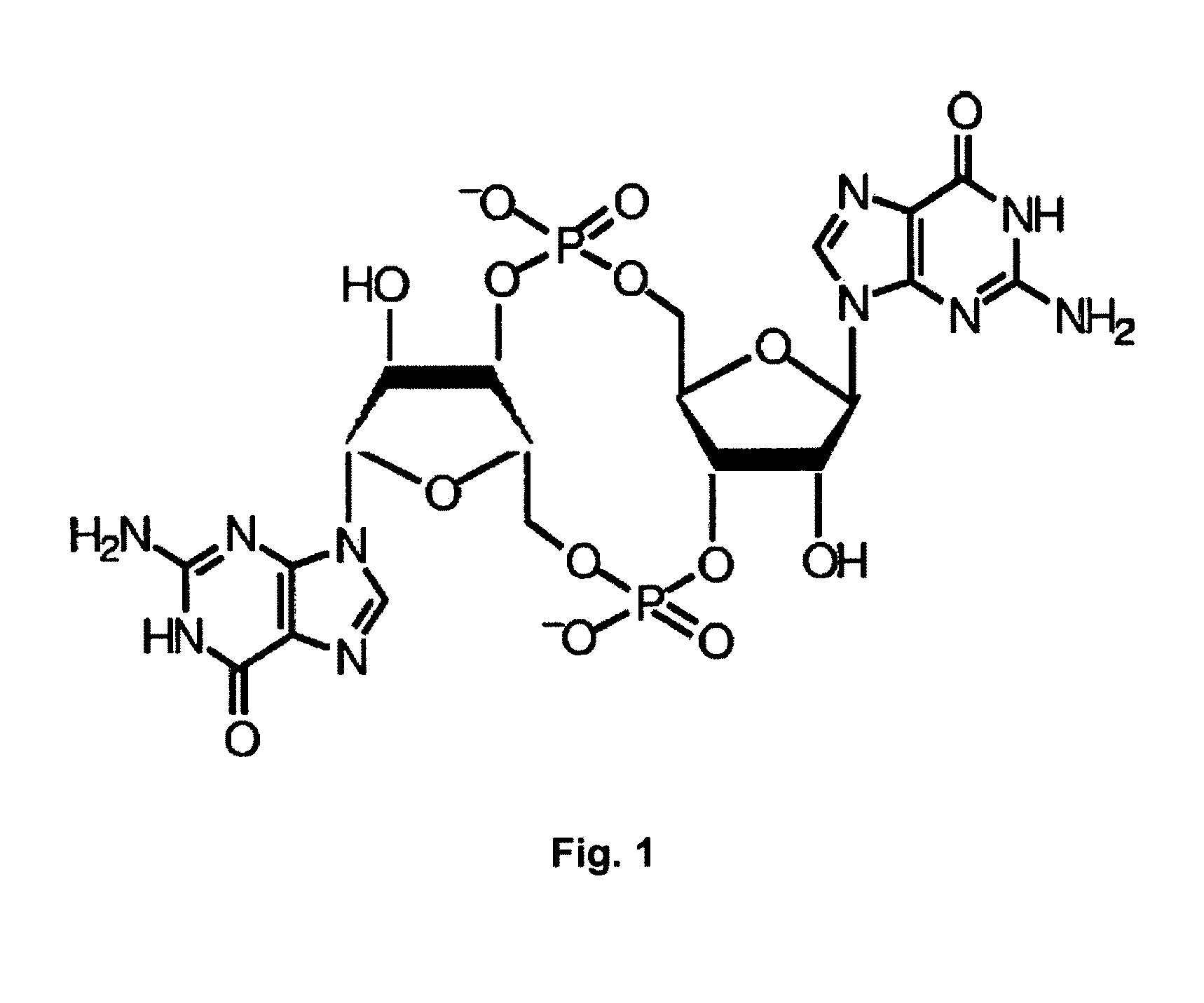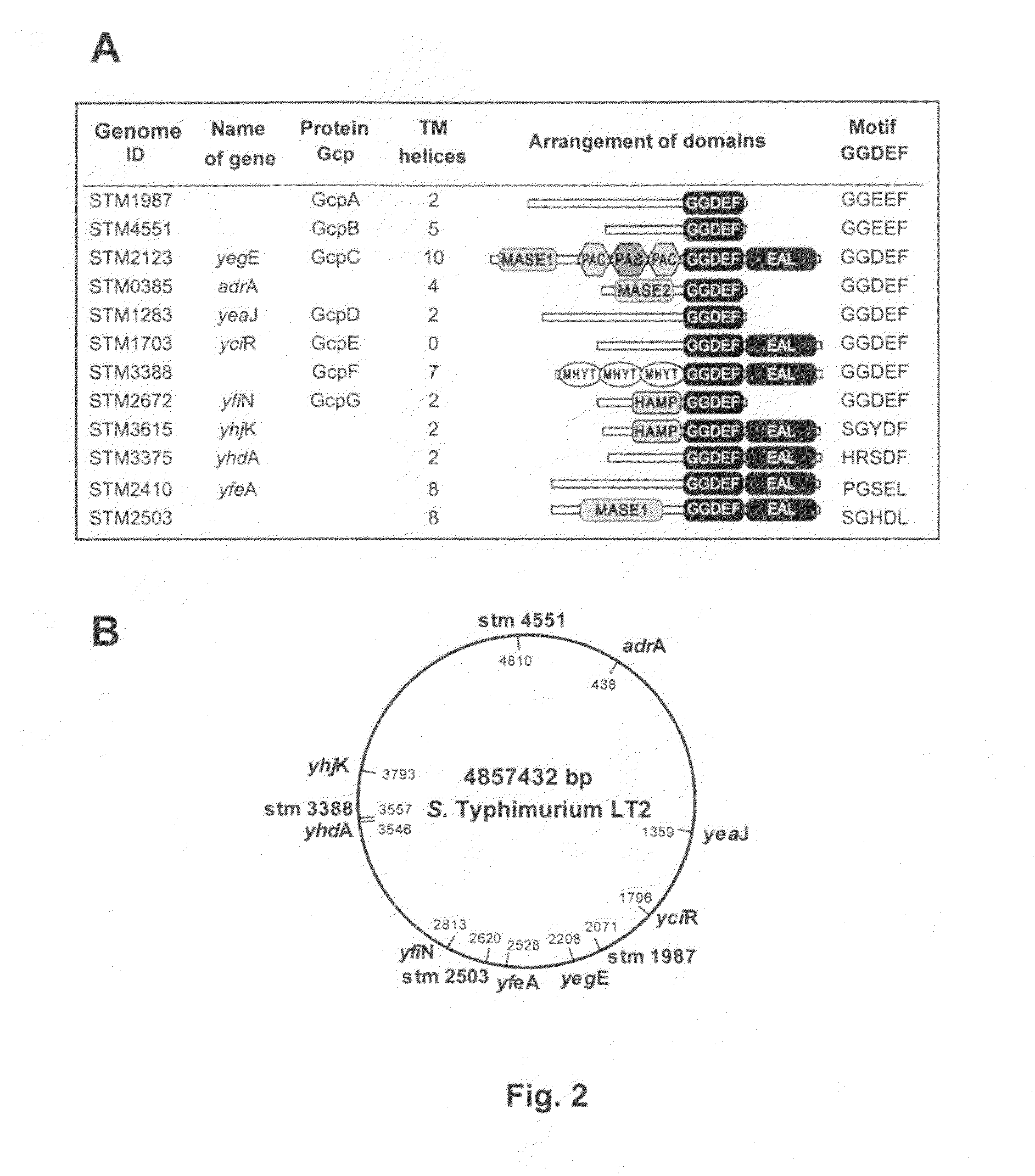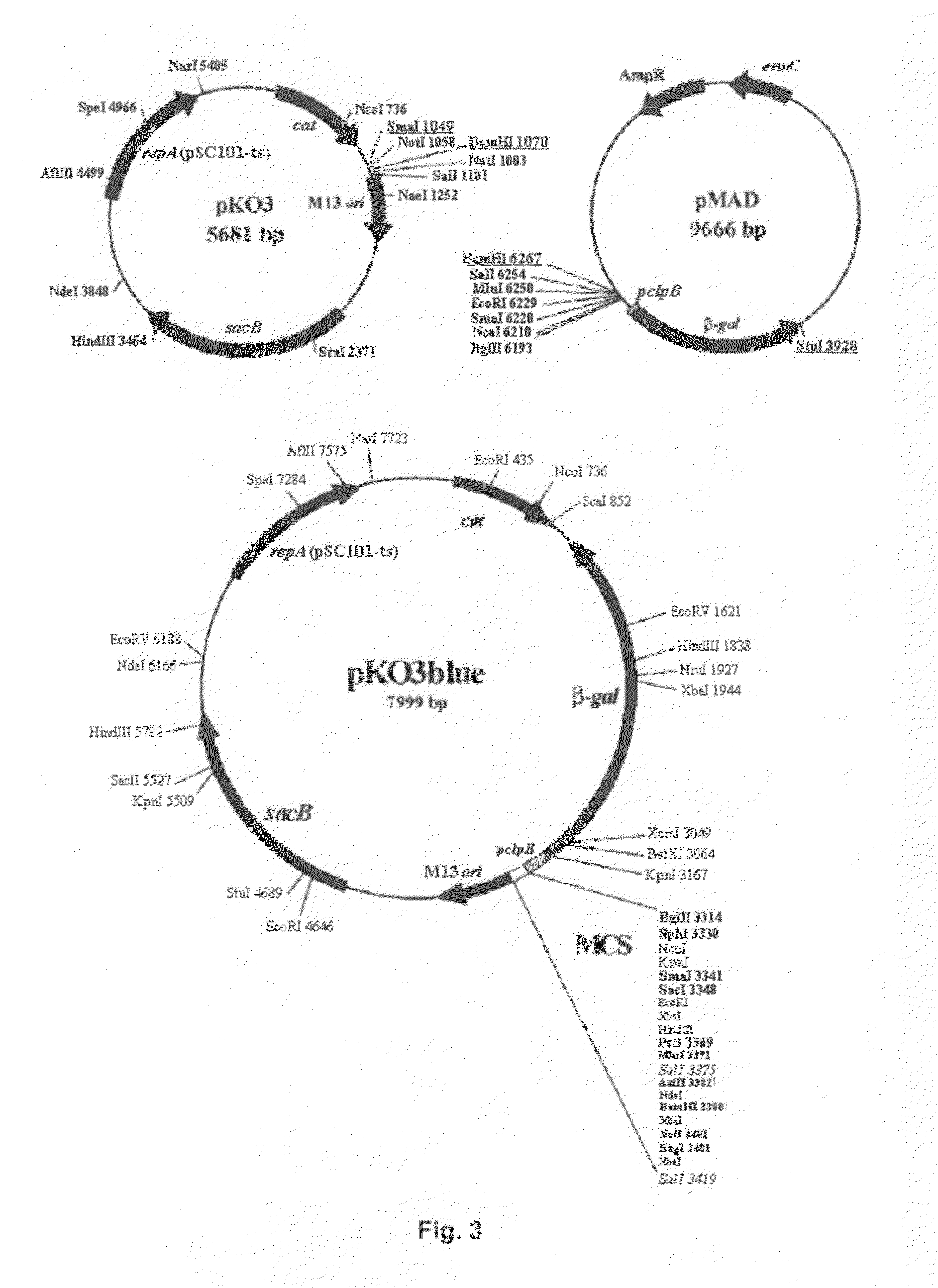Method for producing multiple modifications in the chromosome of gram-negative bacteria and salmonella strains which are deficient in c-di-GMP synthesis obtained by said method
a technology of c-di-gmp and chromosome, which is applied in the field of producing multiple modifications in the chromosome of gram-negative bacteria and salmonella strains, can solve the problems of serious limitations in the method, the redundant presence of ggdef proteins in the genome of the bacteria greatly complicates the elucidation of the particular function, and none of the studies undertaken gave rise to mutant strains that lack more than two functional members of the ggdef family
- Summary
- Abstract
- Description
- Claims
- Application Information
AI Technical Summary
Benefits of technology
Problems solved by technology
Method used
Image
Examples
example 1
Construction of the Plasmid pKO3Blue
[0067]The plasmid was constructed by cloning a gene that codes for β-galactosidase into a plasmid that possesses a heat-sensitive replication origin (see FIG. 3). In this case, the β-galactosidase gene of Bacillus stearothermophilus obtained from the plasmid pMAD was cloned into the plasmid pKO3 (Link et al., 1997). For this, the plasmid pMAD (Arnaud et al., 2004), which contains the sequence that encodes β-galactosidase under the promoter pclpB, was digested with BamHI / StuI and the β-galactosidase gene was cloned between the BamHI / SmaI restriction sites of the plasmid pKO3.
[0068]To facilitate amplification of this plasmid, the E. coli strain XL1Blue was transformed by electroporation with the recombinant plasmid obtained, obtaining the Escherichia coli strain XL1Blue pKO3blue, which was deposited in the Spanish Type Culture Collection, being assigned the accession number CECT 7241, as reflected in the section “Deposition of Microorganisms”.
[0069]...
example 2
Production of the Recombinant Plasmid with which the Bacteria are Transformed
[0070]To obtain the plasmid with which the bacteria are to be transformed, two DNA fragments of approximately 500 nucleotides whose sequence corresponded, in each case, to the regions adjacent to the region of the chromosome that we wish to modify (see FIG. 5), were cloned into the resultant plasmid, pKO3blue. These fragments were obtained by amplification by PCR using the pairs of nucleotides NB and C / D applicable in each case, depending on the gene that we wished to delete. A and B form a pair of primers that make it possible to amplify one of the flanking regions of the gene that is to be removed, whereas C and D form a second pair of primers that make it possible to amplify the flanking region located at the opposite end of the gene that is to be deleted. Amplification will be carried out in such a way that on fusing both fragments in the plasmid, this will produce the modification that we wish to intro...
example 3
Use of the Method of Chromosomal Modification for Deleting Genes that Encode Proteins with the GGDEF Domain in the Genome of S. enteritidis 3934
[0080]The plasmid pKO3blue obtained in Example 2 containing the fragments AB and CD was introduced by electroporation into the strain S. enteritidis 3934 (deposited in the Spanish Type Culture Collection (CECT) with the accession number CECT 7236) and the electroporated bacteria were incubated for 4 h at 28° C. in liquid medium, then they were seeded on plates with a culture medium containing chloramphenicol (20 μg / ml), and X-gal (5-bromo-4-chloro-3-indolyl-beta-D-galactopyranoside) (40 μg / ml) and were incubated at 28° C. for 72 h. The transformed strain of S. enteritidis was selected as a blue colony (see FIG. 4).
[0081]Once selected, the strain was inoculated in liquid medium preheated to 43° C. containing chloramphenicol (20 μg / ml) and was incubated at 43° C. for 48 h to permit integration of the plasmid into the chromosome of the bacteriu...
PUM
| Property | Measurement | Unit |
|---|---|---|
| temperature | aaaaa | aaaaa |
| temperature | aaaaa | aaaaa |
| restrictive temperature | aaaaa | aaaaa |
Abstract
Description
Claims
Application Information
 Login to View More
Login to View More - R&D
- Intellectual Property
- Life Sciences
- Materials
- Tech Scout
- Unparalleled Data Quality
- Higher Quality Content
- 60% Fewer Hallucinations
Browse by: Latest US Patents, China's latest patents, Technical Efficacy Thesaurus, Application Domain, Technology Topic, Popular Technical Reports.
© 2025 PatSnap. All rights reserved.Legal|Privacy policy|Modern Slavery Act Transparency Statement|Sitemap|About US| Contact US: help@patsnap.com



